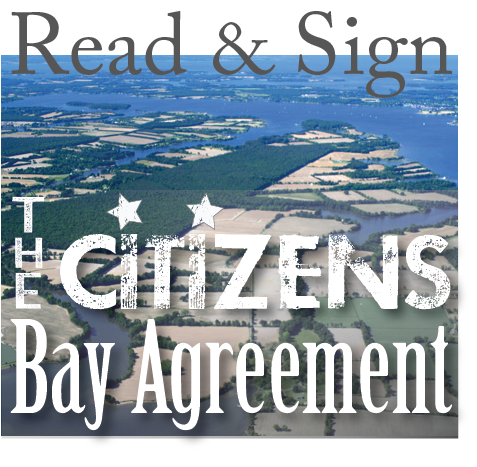Chesapeake Bay Action Plan
After decades of effort, the voluntary, collaborative approach to restoring the health and vitality of the Chesapeake Bay— the largest estuary in the United States—has not worked and, in fact, is failing.
A diverse group of 57 senior scientists and policymakers have joined forces to save the Bay. This is our plan.
A Riverkeeper Reflects
(Posted by Jeanne McCann.)
Local photographer David Joyner interviews Riverkeeper Fred Tutman about his rural roots, growing up on a farm, how he came to be the Patuxent Riverkeeper and the specific pollution issues facing the Patuxent River and the Chesapeake Bay, and his life as an environmental activist.
Fred Tutman, Riverkeeper from david joyner on Vimeo.
“Death by a Thousand Cuts”: Chesapeake Bay’s Disappearing Shoreline
(This is the first in a series of reviews of notable films that we feel should be part of any card-carrying environmental activist’s toolkit. We’ve chosen films that we think have made an important contribution to understanding the challenges facing restoration of the Chesapeake Bay. We kick off with a look back at Michael English’s 2008 gem, “Weary Shoreline.” -Eds.)
(Posted by John D. Wickham.)
 Coastal Maryland, encompassing the state’s capital, Annapolis, the counties of Anne Arundel, Talbot, and Dorchester, and still other areas, is one of the most beautiful natural landscapes in the United States, whose rivers and tributaries feed into the nation’s largest estuary, the Chesapeake Bay. Though picturesque, this border area where land and sea meet has been under relentless pressure from human population growth and real estate development in the last three decades. Estimates put Southern Maryland’s loss of forest cover at more than 160,000 acres in the last fifteen years.
Coastal Maryland, encompassing the state’s capital, Annapolis, the counties of Anne Arundel, Talbot, and Dorchester, and still other areas, is one of the most beautiful natural landscapes in the United States, whose rivers and tributaries feed into the nation’s largest estuary, the Chesapeake Bay. Though picturesque, this border area where land and sea meet has been under relentless pressure from human population growth and real estate development in the last three decades. Estimates put Southern Maryland’s loss of forest cover at more than 160,000 acres in the last fifteen years.
Return of the Chesapeake Bay Pop Quiz
(Posted by Gerald Winegrad.)

Question: What are just some of the consequences of unchecked agricultural runoff in the Chesapeake Bay?
Answer: Skin-devouring diseases, destroyed oyster bars, and severely degraded water quality.
Some Inconvenient Truths About the Chesapeake Bay
(Posted by Jeanne McCann.)
Settle in, grab some popcorn, put your feet up and prepare to be outraged when you hear what former Maryland State Sen. Gerald Winegrad, architect of the 25-step Chesapeake Bay Action Plan, has to say in this excellent public presentation at Quiet Waters Park, Annapolis, Maryland, on May 19, 2011.
The Pollution Diet and Environmental Arbitrage
(Posted by Bob Gallagher.)
After decades of dissembling and broken promises, the President’s Executive Order 13508 and the implementing “pollution diet” proposed by the EPA represent the best chance we have had in a generation to actually start cleaning up the bay. It shouldn’t come as a surprise then that corporate polluters have ramped up their opposition to the pollution diet to unprecedented levels to include massive spending on media advertising, lobbying, campaign contributions, litigation and scientific dirty tricks.
Healthy Bay = Healthy Economy
(Posted by Fred Tutman.)
On May 20, 2011, Waterkeepers Chesapeake, along with other Maryland-based Waterkeepers staged an historic event in Annapolis at the City Dock. Firing up their patrol boats, the Riverkeepers, accompanied by a crowd of supporters, motored into Annapolis in a Flotilla of Boats in order to make a point. On the day the Governor was signing (or vetoing) new legislation in the Maryland statehouse, this group of water advocates wanted to make sure that both the public and the legislature understood that time is running out to save our waterways. It’s time for deeds–not just promise–in order to bring about necessary change.
The High Cost of a Dirty Bay
(Posted by W. Tayloe Murphy Jr.)
Twenty-five years ago, in a speech to the Virginia Seafood Council, I reminded the audience that when it comes to pollution, there truly is no free lunch. Last year, when states were submitting their cleanup plans to the federal Environmental Protection Agency, amidst a deluge of complaints about the fed’s heavy-handedness, I found myself repeating my warning in an op-ed in the Richmond Times-Dispatch.
But it seems like some folks have yet to get the message. So here I am again.
National Research Council Report Echoes Bay Action Plan Recommendations
(Posted by Gerald Winegrad.)
The National Research Council has just released its evaluation of the Chesapeake Bay Program’s pollution reduction program this week. The report, Achieving Nutrient and Sediment Reduction Goals in the Chesapeake Bay: An Evaluation of Program Strategies and Implementation, the culmination of a study begun in 2009 and sponsored by the U.S. EPA, fully supports the measures outlined in the Bay Action Plan.
We are senior Chesapeake Bay scientists and policymakers from Maryland, Virginia and Pennsylvania who have concluded that after decades of effort, the voluntary, collaborative approach to restoring the health and vitality of the largest estuary in the United States has not worked and, in fact, is failing. Our group unanimously recommends that all states draining into the Chesapeake Bay adopt our 25 action items in their Watershed Implementation Plans (WIP) and implement them to improve the Bay’s water quality and to meet the requirements of the Clean Water Act.
Sign up for news & updates from Patuxent Riverkeeper
